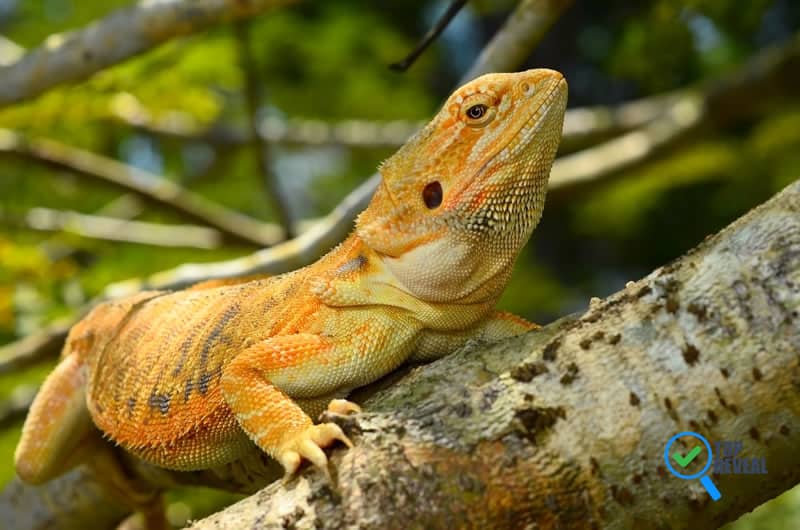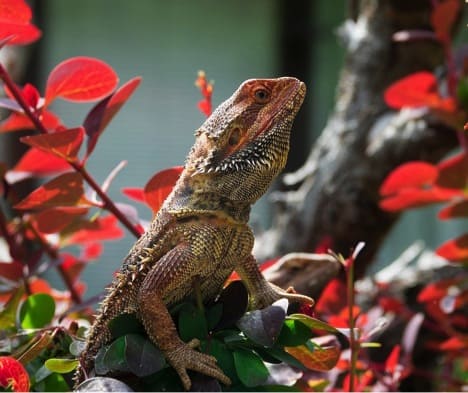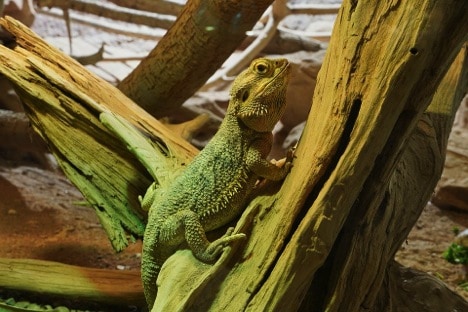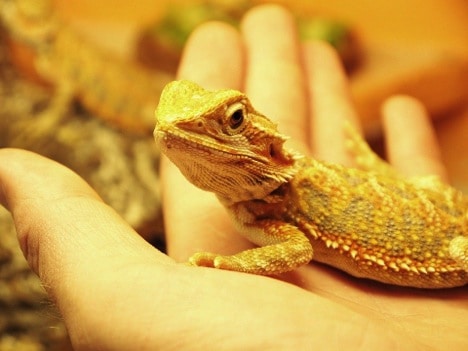Bearded dragons are natives of Australia, but they are prevalent in countries such as the United States. You can read more information about them on this site here. They are the most docile ones in the lizard world, and they have very cute beards. Most of their owners are treating them the same as dogs but with the scales. Their natural habitat is the desert, and they needed to be housed in a special environment to thrive.
Things to Know About Your Pet
Contents
- They can live for as long as a decade.
- They can grow to a maximum of 24 inches.
- They are medium-sized lizards that may have yellow, red, brown, and white colors.
- They are a very friendly class of reptiles, and they mostly wave their hands as if to say hello.
Setting up Its Home
You may have to change terrariums throughout your pet’s life. If you are in the initial stages of taking care of them, you need at least a 36-inch long glass that has 40 gallons in volume. The lid should be made up of screens so he can breathe easier. The bearded dragons live in a dry and warm environment, so you may want to set up a heating source near the terrarium.
Best things to Put in the Terrarium
If you wish him to become more at home and remind him of his desert origins, you may want to add calcium sand about three inches deep. There are also reptile carpets that you can get from many pet shops online, so you may want to invest in them. The younger ones may love the carpet better because they are more comfortable with their bodies. Waste should be scooped up once a week and consider changing into fresh beds at least twice a month.
You may find that your reptile is particular and sensitive to the room temperature. You need to adjust the heating and cooling systems depending on the current season of the year. You may want to give them a piece of rock or driftwood to help them climb closer to the source of heat, and they have somewhere to hide whenever they feel like it. A few branches will help them exercise, and these are good for climbing activities.
Lighting and Heating
To ensure optimum health, your pet must have a cool area to rest and a reliable heat source if he becomes uncomfortable. You can read a full guide on https://beardeddragonguidance.com to know more about what you should do to keep your pet healthy. Your bearded dragon is an ectotherm, and here are other things that you can learn about them:
- You need a hygrometer to measure the humidity inside the terrarium. The thermometer should be put on each end for you to keep track of the temperature. The humidity where these reptiles will thrive best is around 20% to 30%, so it’s best to keep this in mind.
- If you read the humidity level to be less than the recommended 20%, you may want to do light misting once to help your pet become more comfortable.
- The basking spot should be the warmest spot inside the terrarium, and there should be a heat light that makes the area warmer during the day. The temperature should be about 49 centigrade, and the cold end of the spectrum should be about 24 centigrade.
Diet of Bearded Dragons
It’s easy to get food for these reptiles as they are omnivores in nature. This means that a diet with meat and plants is right for them. The young ones may prefer small insects, but once they mature, they enjoy various vegetables. Make sure to provide clean bowls of food and water every day.
You can choose from various insects, including wax worms, mealworms, and crickets, which can serve as calcium supplements, and they should be given twice a week. Read more about a guide to their diet here: https://www.reptilesmagazine.com/the-best-guide-to-bearded-dragon-nutrition/.
- Vegetables like chopped carrots and dark green leaves are great options that should be given every other day. This will depend on your pet’s age, but it should consist of about 50% of its diet.
- Melons, apples, bananas, and other fruits should comprise about 5% of the bearded dragon’s food and should be given once a week.
- Pellets and other prepared diets should be about once a day.
- Water should be changed daily at all times.
Checking the Health of your Bearded Dragon
It would be best if you left the new reptile alone for four to five days. This means that you should keep yourself from handling it as they are still getting used inside their new terrariums. Most of the lizards may get sick if they are not comfortable with the new environment, so you may want to look out for signs early on. Consult your vet if you see the following symptoms:
Signs of Diseases
- You see them hide more than usual
- They don’t eat or drink much, and you even see some signs of weight changes
- The joints are swollen
- Nose, mouth and the eyes are discharging mucus
Signs that they are Healthy
- Alertness
- Good appetite and more willing to eat
- Basking behaviors are uncommon
- Clean vents
- Posture is upright
- Belly is filled
- No swollen tails and toes
- No excretions from the eyes or mouth
Owners must pay attention to any tell-tale signs that will tell them that something is wrong with their bearded dragons. If you see that any unhealthy symptoms can be remedied by changing the diet or the habitat, then do so as soon as possible. If you tried all the remedies available, but nothing worked, then a visit to a reptile veterinarian will give you an accurate diagnosis of what’s going on with your pet.
Making your pet comfortable and ensuring that they are comfortable with their new home should be one of your priorities. Look for articles or read books about bearded dragons. Read about what you should do if they are shedding, and don’t be afraid to ask on online forums if something is worrying you about your pet. Check the eyes and make sure that they are clear. See to it that your pet is eating normally.



